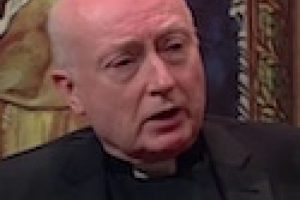Column: From the Pastor
A 1973 film directed by Orson Welles was about forgers, and it turned out to be something of a forgery itself. Some of the information in “F for Fake” was itself faked. Later on, Welles claimed that this was deliberately done as a kind of joke, and he took to calling it an “essay” and “docudrama” rather than an authentic documentary. In art circles, some forgers have become celebrities, both for their skill and for their criminal cleverness.
In the last century the Hungarian forger Elmyr de Hory duped more than 1,000 collectors with his copies of masterpieces. John Myatt swindled Sotheby’s and Christie’s with his. Robert Driessen made a fortune from his slick forgeries of Giacometti. More impressive was Han van Meegeren, who became a folk hero in Holland for the way he could forge works by Vermeer. In 1911, when the Mona Lisa was temporarily stolen, Yves Chaudron was reputed to have sold six copies to unsuspecting wealthy Americans. It is surprising that Michelangelo carved what he claimed was an ancient Roman sculpture of “Eros Sleeping,” which he aged by rubbing it with acidic soil. He did this when he was 21, possibly as a joke, around the same time that he made the Pietà, so he certainly was not lacking talent.
A friend asked me why forgeries are less valuable than originals, if it is hard to tell them apart. The question can be annoying, but it has a certain logic. The answer, of course, is that the value of a work consists not only in its artistry, but in its originality. In that sense, what we call creativity is a gift of God who alone is the Source of all things, including life itself. Only God is the primary Creator, and humans are his pro-creators. We cannot produce something out of nothing.
The more individuals allow God, by a right exercise of the free will, to shape their souls according to his likeness, the more their individuality becomes pronounced. This is the work of “sanctifying grace” by which God “perfects human nature,” as Saint Thomas described the process (Summa Theol. 1, 1, 8 ad. 2).
The Anti-Christ cannot create, and so he tries to make human forgeries, by sin. The more people block the will of God, the more they become uninspired copies of each other. This is why sinners are predictable, while saints are always surprising. No two saints are alike.
A figure of speech, synecdoche, uses one word, as part of something, to represent the whole. Forgers are synecdoches of all sinners who pretend to be creative instead of letting God work through them.
The month of November focuses on the saints, who are not cleverly crafted imitations, but who are authentic images of God who “alone has immortality, dwelling in unapproachable light, whom no man has seen nor can see” (1 Timothy 6:16).
——————————–
Fr. George W. Rutler, S.T.D., is a brilliant scholar, author, convert, former pastor of Our Saviour in Midtown Manhattan, the closest Catholic parish near the site of 9-11, and now pastor of St Michael’s parish in Hell’s Kitchen, New York City. A donation of any amount may be made to the parish at: www.StMichaelNYC.com.
View Articles Father Rutler was ordained to the diaconate in Rome by His Eminence William Cardinal Baum in 1980 and received priestly ordination in St. Patrick's... MORE »



You must be logged in to post a comment.